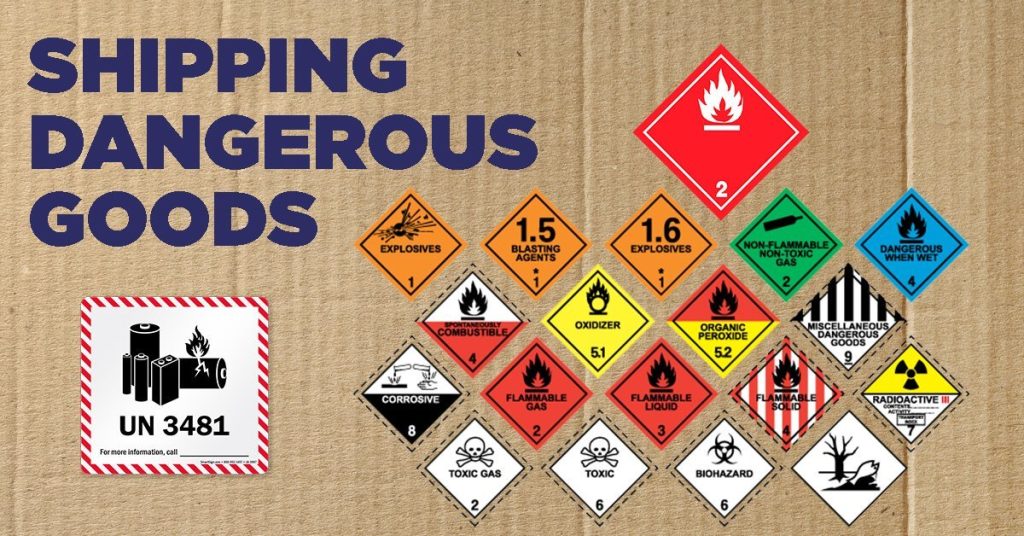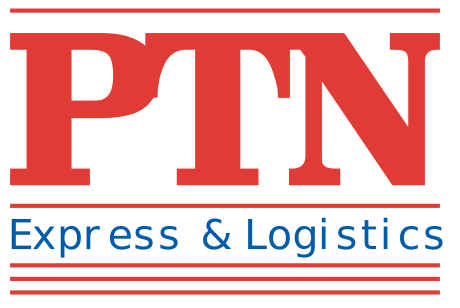In import and export freight transport, goods are classified into various categories, including normal goods and dangerous goods. So, what are dangerous goods? Let’s explore this with PTN Logistics in this article.

1. Definition:
What are Dangerous Goods?
Dangerous Goods (DG) refer to items that contain hazardous materials during transportation. These substances can exhibit explosive, flammable, toxic, infectious, or corrosive characteristics.
Such goods have the potential to pose risks to human life, health, the environment, and national safety. They require careful packaging, labeling, and handling during transport.
PTN Logistics is fully qualified to handle dangerous goods to ensure safe and efficient transportation. With a highly experienced team and IATA certification for DG handling, PTN provides optimal shipping solutions for these items.
Let’s explore the process of declaring dangerous goods:
2. PROCESS OF DECLARING DANGEROUS GOODS
Step 1: Classify the Goods
Identify the category of dangerous goods according to applicable regulations.
Step 2: Identify the Goods
Determine the specific type and characteristics of the dangerous goods being shipped.
Step 3: Package the Goods
Ensure that the goods are packaged properly according to safety standards to prevent leaks, spills, or other hazards.
Step 4: Label the Goods
Affix the appropriate hazard labels to the packages to inform handlers of the risks.
Step 5: Prepare Documentation
Gather necessary documents, including the shipping declaration, air waybill, and customs paperwork.
For a DG shipment to be processed, the following documents must be provided:
- Delivery Receipt.
- Invoice & Packing List.
- Authorization Letter from the sender to the service provider (the authorization letter must be stamped with the company’s official seal).
- Material Safety Data Sheet (MSDS) with all 16 sections completed, stamped on the analysis table.
- Declaration of Dangerous Goods by the shipper:
Unless otherwise specified by IATA, the “Dangerous Goods Declaration” is required and must be completed for each DG shipment by an individual certified in dangerous goods regulations by IATA.
Requirements for Packaging, Containers, Packing, Labels, or Containers:
Ensure that all packaging and containers meet the necessary safety and regulatory requirements.
3. Classification of Dangerous Goods
Divided into 9 types as follows:
There are 9 classes of Dangerous Goods:
CLASS 1 – Explosives: These include explosives and explosive materials such as fireworks and flares.
Depending on the reaction severity, explosives are divided into 6 divisions:
- Division 1.1: Substances and articles with a mass explosion hazard.
- Division 1.2: Substances and articles with a projection hazard but not a mass explosion hazard.
- Division 1.3: Substances and articles with a fire hazard and a minor explosion or projection hazard, but not a mass explosion hazard.
- Division 1.4: Substances and articles with a negligible explosion hazard.
- Division 1.5: Very insensitive substances that have a mass explosion hazard.
- Division 1.6: Extremely insensitive articles that do not have a mass explosion hazard.
CLASS 2 – Gases: This class can be further divided into flammable gases, non-flammable gases, and toxic gases.
Divisions include:
- Division 2.1: Flammable gases.
- Division 2.2: Non-flammable, non-toxic gases.
- Division 2.3: Toxic gases.
CLASS 3 – Flammable Liquids: This includes flammable liquids and sensitive explosive liquids, such as paints, oils, gasoline, and alcohol.
CLASS 4 – Flammable Solids: This class includes flammable solids, sensitive explosive solids, self-reacting substances, and substances that can emit flammable gas when in contact with water, such as phosphorus, sulfur, and matches.
There are 3 divisions for Class 4:
- Division 4.1: Flammable solids, self-reacting substances, and explosive solids that are immersed in liquid or are desensitized.
- Division 4.2: Substances that can self-ignite.
- Division 4.3: Substances that produce flammable gas upon contact with water.
CLASS 5 – Oxidizing Substances and Organic Peroxides: This includes oxidizing agents (like fertilizers) and organic peroxides (like fiberglass).
It is divided into 2 divisions:
- Division 5.1: Oxidizing substances.
- Division 5.2: Organic peroxides.
CLASS 6 – Toxic and Infectious Substances: This class includes pesticides, blood testing solutions, and medical testing materials.
This category is also divided into 2 divisions:
- Division 6.1: Toxic substances, such as pesticides.
- Division 6.2: Infectious substances, such as blood testing solutions and medical tests.
CLASS 7 – Radioactive Materials: This class includes radioactive substances.
CLASS 8 – Corrosives: This includes corrosive substances, such as bleach and batteries.
CLASS 9 – Miscellaneous Dangerous Substances and Articles, Including Environmentally Hazardous Substances: This includes other dangerous items such as magnets and laptops.
To determine which class a particular item belongs to, you can refer to Section 14 (Transport Information) of the Material Safety Data Sheet (MSDS) or check the labels on the goods.

